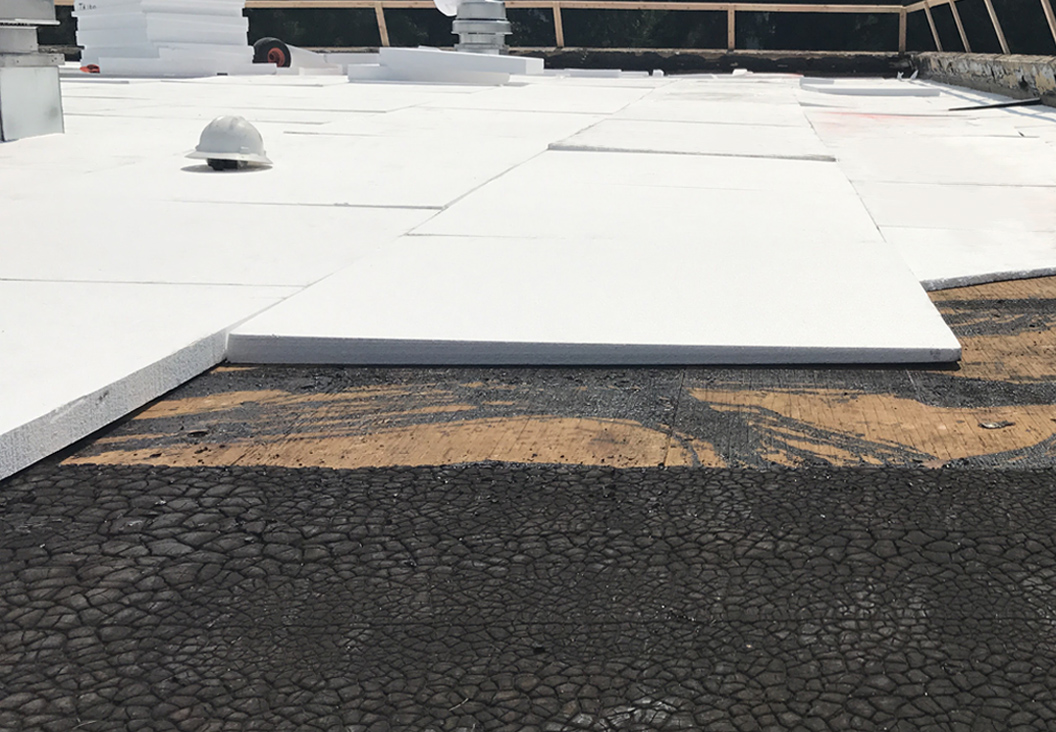
Simplifying Low-Slope Roof Build-up with Tapered EPS Insulation
Water is a difficult element to tame. If left unchecked, water will make its own, often destructive path that can affect building integrity. While roofing construction best practices often call for a positive slope that allows water to run off, creating these structures can be a costly and labor intensive. Fortunately, roofing insulation products are available that simplify the build-up process and save roofers time and money.
The Traditional Fix is Labor Intensive
Creating a positive-slope roof is traditionally done by installing rigid board insulation, such as XPS or polyiso, on flat or low-sloped roofs. There is a problem with using these materials, though: XPS and polyiso are available in boards that are no more than a few inches thick. Using these materials requires crews to move and install multiple layers of insulation to create positive slope in the roof assembly. While this method will eventually achieve the desired result, it is not the most practical use of time or resources.
Simplifying the Job with EPS
In contrast, tapered Expanded Polystyrene (EPS) rigid foam insulation is available in blocks up to 40 inches thick and can be cut to virtually any slope depending on the drainage needs of the building. Because of its size and customization options, tapered EPS often can be installed in a single layer. This eliminates the need for complicated stack and fill techniques used with XPS and polyiso, and can reduce roof insulation labor and material costs up to 30 percent.
Conclusion
Water may be a difficult element to tame, but with simplified construction techniques and products, flat-top buildings can be better protected from its destructive nature. Tapered EPS can simplify your low-slope roof insulation build-up by providing the custom water drainage solution you need, at a cost that is easy on your budget.

